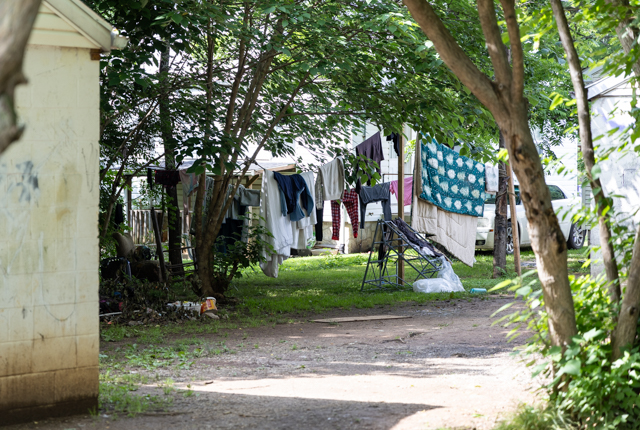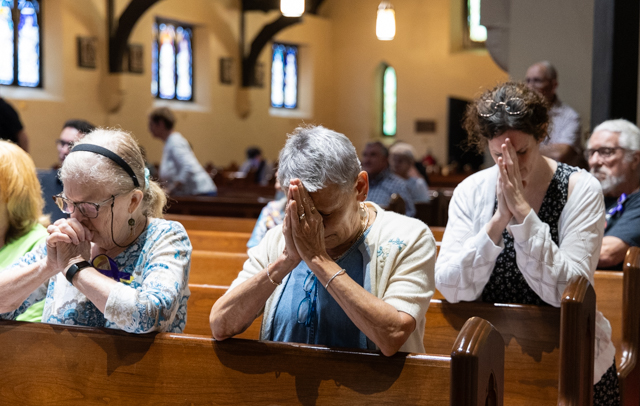Safe in the sun
Published 12:00 am Saturday, June 18, 2011

- Pete Rodman/Daily NewsElaine Price of Bowling Green found out about a year ago that she had melanoma. “People need to wear sunscreen,” she said. “Be cautious. If you see anything suspect, go to the doctor.”
When she was younger, Elaine Price would lie in the sun and use baby oil and iodine in her pursuit of a good tan.
About a year ago, the Bowling Green woman found out she had a more aggressive form of skin cancer.
“Originally, I went to Dr. (John) Cowan because I had some moles I wanted to get removed. I had been reading that you need to get your skin checked,” she said. “He said he didn’t like the look of one on my back and wanted to take it off. He sent it in and found out it was melanoma.”
As hot days of summer approach, more people begin to engage in outdoor activities and tanning. Dermatologist Dr. John Cowan of Bowling Green Dermatology and Skin Cancer Specialists said people should take special care when they’re preparing for fun in the sun.
“Some patients consider tanning with sun rays healthier. Some people say, ‘I tan and don’t burn,’ ” he said. “There’s no such thing as a healthy tan. Even tanning gradually over time is not healthy. The more sun exposure you have, it leads to more DNA damage, which leads to skin cancer.”
Tanning beds aren’t any better, Cowan said.
“Tanning beds are really, really bad for patients, but it’s hard to keep young people out of them. The only population not going down (in the number of skin cancer cases) is young girls, particularly Caucasian girls,” he said. “Tanning is associated with virtues of beauty. It’s hard to convince that population not to do it.”
Kentucky Cancer Program cancer control specialist Elizabeth Westbrook said the symptoms of skin cancer can vary, including a new growth or change in an existing mole; a lump that is small, shiny and waxy or red; a sore or lump that bleeds or develops a crust or scab; or a rough, dry, scaly patch that sometimes becomes itchy or tender.
“You want to get any change checked out,” she said. “It might not be cancer, but if it’s caught early, it’s treatable.”
With melanoma, the cancer is more likely to spread, Westbrook said. People should think of “ABCDE” when looking for melanoma symptoms:
“A” is asymmetry, when one half doesn’t match the other.
“B” is border, edges that are ragged, notched, blurred or irregular and sometimes pigment will “bleed out” into the skin, meaning that there are no clear margins.
“C” is color. Most moles are one color, but melanoma can cause moles with different color combinations, such as a mixture of black and tan, brown and red, or pink and blue.
“D” is diameter. Most moles are smaller than a pencil eraser. Melanomas are larger than that.
“E” is elevation, meaning the mole may start getting thicker.
“(Melanomas are) also highly curable when detected earlier,” Westbrook said. “A melanoma can occur out of an existing mole or develop on the skin.”
Many methods are available to treat skin cancer, including various types of surgery, chemotherapy, radiation, cryosurgery, which uses liquid nitrogen, and laser surgery, Westbrook said.
Westbrook said she takes a tool called a Dermascan to businesses and schools so people can see how much sun damage they have.
“We offer it to help people see what sun damage looks like. They can be aware of where the damage is and watch it more closely,” she said. “It’s not diagnostic. It’s educational.”
Cowan said he removes a few thousand skin cancers every year. He encourages people to wear a broad spectrum sunscreen to protect them against UVA and UVB rays.
“We recommend an SPF of 30 or higher,” he said. “If you’re going to be swimming or outside sweating, reapply it every one and one-half to two hours.”
The amount of SPF in face makeup such as foundation is inadequate, so extra protection is needed, Cowan said.
“You’re looking at an SPF of two to 16. Apply a small amount of sunscreen every day,” he said. “The amount in a shot glass should cover your entire body.”
UV protective clothing, hats and shade can offer some protection from the sun, Cowan said.
“If you’re out on the playground and there’s a tree, have your conversation under a tree,” he said.
Chemicals in pools can be hard on the skin, so Cowan recommends trying over-the-counter hydrocortisone creams first if they cause itching. He also tells patients to use moisturizer to prevent dry skin.
“Find a moisturizer you like and stick to it,” he said. “It’s as important to use moisturizer in the summer as it is in the winter.”
Price said she is more careful about her time in the sun. Buying and using sunscreen is easier than dealing with skin cancer, she said.
“Now I use sunscreen. I’ve got grandchildren and I’m careful about keeping sunscreen on them,” she said. “My family is more cautious about it. We’re aware.”
She urges patients to be their own advocates.
“You’ve got to check yourself. The key is getting to it,” Price said. “When you suspect something, go to the doctor. It’s better to find out it’s nothing than to wish you had gone to the doctor.”






